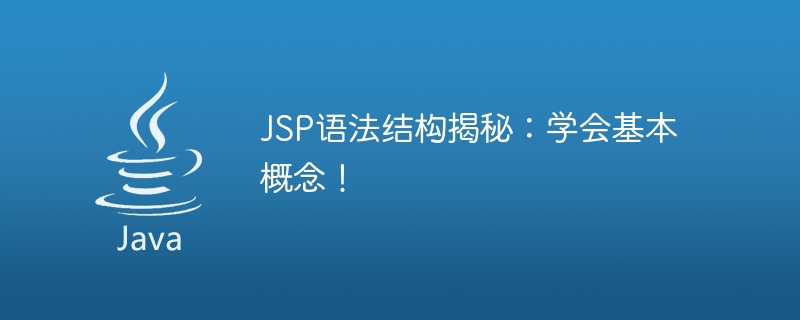

JSP syntax structure revealed: learn the basic concepts!
JSP (JavaServer Pages) is a popular Java web development technology that allows you to embed Java code into HTML pages. This enables you to create dynamic web pages that can change based on user input or the results of database queries.
Basic concepts of JSP
JSP code example
<%@ page language="java" contentType="text/html; charset=UTF-8" pageEncoding="UTF-8"%>
<!DOCTYPE html>
<html>
<head>
<title>JSP Example</title>
</head>
<body>
<h1>Hello World!</h1>
<%
// This is a Java comment.
int x = 10;
int y = 20;
int sum = x + y;
%>
<p>The sum of x and y is <%= sum %></p>
</body>
</html>This code demonstrates the basic syntax structure of JSP. First, we use directives to specify the Java version used by the page, import the library, and set the page encoding. Next, we use a script element to embed Java code to calculate the sum of x and y. Finally, we use an expression to print the value of the sum to the page.
Advantages of JSP
Disadvantages of JSP
Conclusion
JSP is a popular Java web development technology that allows you to embed Java code into HTML pages. JSP is easy to use, highly dynamic, has good scalability, and has strong security, but its performance may not be as good as that of pure HTML pages, its security may have loopholes, and its portability is poor.
The above is the detailed content of Reveal the basic concepts of JSP syntax structure. For more information, please follow other related articles on the PHP Chinese website!




